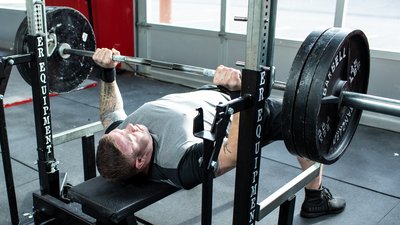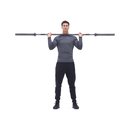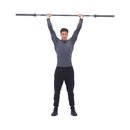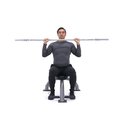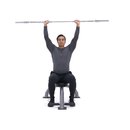Walk into any gym and you will see people performing many variations of the bench press. There's no right or wrong way to do it, but if your ultimate goal is a big bench, you probably know that the powerlifting style bench press is the one you should be using, as the arched position can be advantageous for moving more weight.
Benching heavy on a regular basis is necessary if you're chasing high numbers, but it's impossible to overlook the importance of accessory movements. Not only do they keep your body moving in different ranges of motion and help prevent injury, but they are also the ultimate tool for bringing up weak points in the main lifts.
Generally, trainees experience difficulty at one of three points in the bench press: off the chest, at the midpoint of the lift, or just below lockout. Below are our favorite bench accessories that we use with our clients at JK Conditioning (St. John's, Canada) for working through specific weaknesses.
1. Weak off the Chest: Duffalo Bar Bench Press or Dumbbell Bench Press with Deep Stretch
The Duffalo Bar is a curved barbell that gives you a deeper stretch and more range of motion than a standard barbell, about 2 inches deeper for most people. When the range of motion of any exercise is increased, the difficulty of the movement is increased.
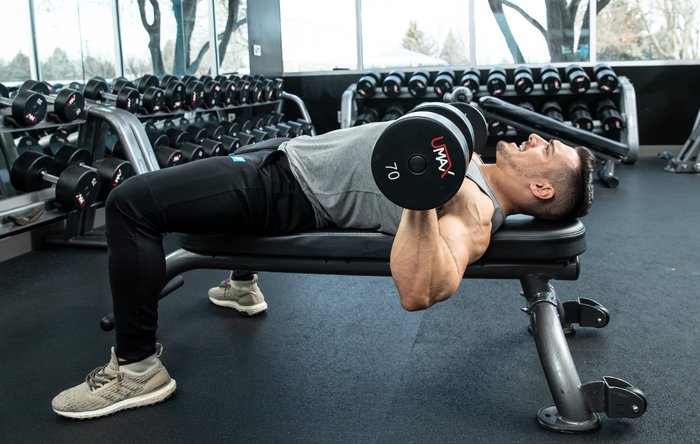
If you find your bench press failing off the chest, one solution is to force yourself to go even lower. After working in a longer range of motion, you'll develop strength "out of the hole," and your regular bench press will feel shorter and, therefore, easier. Additionally, because of the curve of the bar, your elbows will tuck in naturally, which helps you achieve the ideal technique for maximizing strength and shoulder stability.
If your gym does not have a Duffalo Bar, dumbbells are also an option. Just make sure you keep them wider than your chest and bring them lower than the stopping point of a standard barbell press.
For either of these movements, keep your sets and reps in the moderate range. Try 4 sets of 6-8 repetitions, stopping each set when you feel as if the next rep will result in technical failure.
2. Weak at the Midpoint: Barbell Military Press or Seated Shoulder Press
One often overlooked component of the bench press is the strength and hypertrophy of the anterior, or front, deltoids. Beginning trainees may look at the bench press solely as a chest exercise, but intermediates start to understand the importance of the triceps, and advanced trainees recognize the importance of all of the above plus the anterior delts.
If you are weak in the midpoint of your press, it's likely that your deltoids are underdeveloped in comparison to your pecs and triceps. When our clients present this issue, the prescription is generally the military press, seated shoulder press, or a combination of the two.
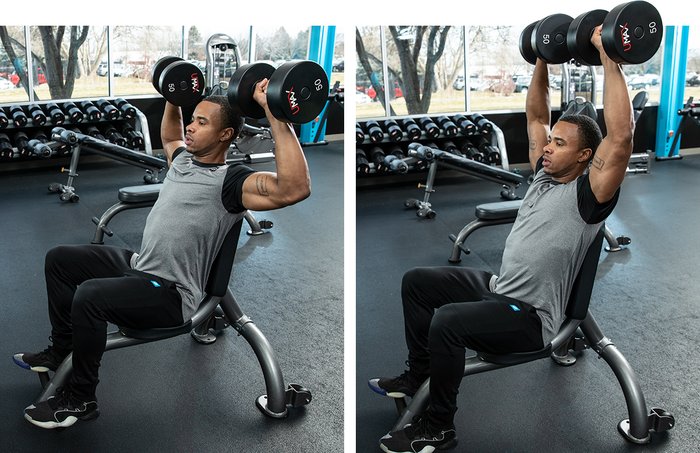
For the military press, take a shoulder width or slightly wider grip and unrack the bar. Forcefully squeeze your glutes to keep your torso upright. Then, keeping your elbows tucked, press the bar overhead to full elbow lockout. Lower the bar under control to the starting position, and press again for the desired number of repetitions.
For the seated shoulder press, set an incline bench to about 75 degrees. Again, keeping your elbows tucked, press the dumbbells overhead. Be sure that your back stays glued to the bench or your pecs will take over the movement.
For each of these movements, try 2-4 sets of 8 reps and employ strict form to target the deltoids maximally.
3. Weak at Lockout: Floor Press or Pin Press
Weakness in the lockout of your bench press can be symptomatic of weak triceps. To correct this issue, we favor either the close-grip floor press or the barbell bench press performed from pins.
At JKC, we coach the close-grip floor presses with a 2-second pause at the bottom of the rep. This reduces the influence of the stretch-shortening cycle and forces the triceps to break inertia to accelerate the bar off the floor. We also coach no leg drive while you're lying on the floor so you can focus strictly on your triceps.
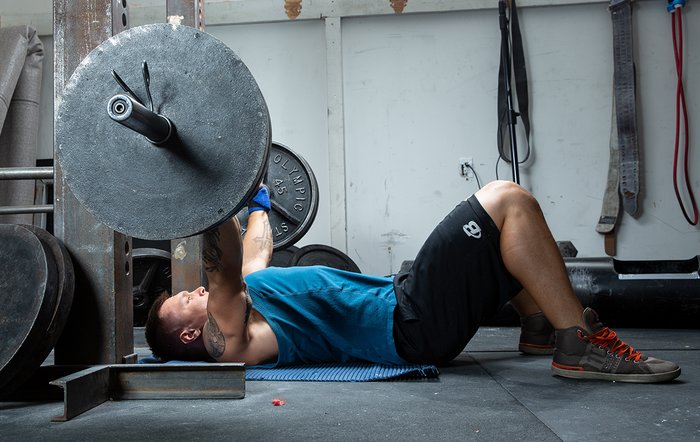
For the pin press, the bar is set to a particular height, generally 4-6 inches from lockout. You must start this motion from the bottom, again using your triceps to forcefully break inertia and accelerate the bar upward. In this variation, you use a regular bench press grip width and can also use leg drive.
As the triceps respond well to heavy work, try doing 4-6 sets of 3-5 reps of either of these movements during you weekly program.
Bonus Tip: For more advanced clients, we like to use the floor press and pin press in combination with another training hack called accommodating resistance. Here, we add either chains or bands to the bar to increase the lockout difficulty.
Accommodating resistance means that the weight increases as you accelerate the bar, ensuring that you will have to provide a consistent effort throughout the range of motion.
Bigger Benching Made Simple
Here's a sample week that incorporates these training methods. We also like doing push-ups in one of our workouts to train the scapular stabilizers, which we want to keep healthy and functioning so we can keep benching big! Make sure to protract your scapulae fully at the top of each rep.
This sample workout is meant to help you train your weaknesses in the bench press alone. You can integrate it with other programs for the squat and deadlift. You progress these exercises by adding reps or sets, or increasing the load used each week.
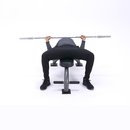
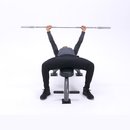
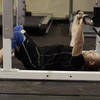

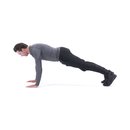
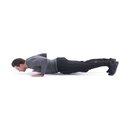
Want to raise your bench press total even higher? Gain access to Bench 300, plus more than 50 other expert-designed fitness plans in Bodybuilding.com BodyFit Elite.

